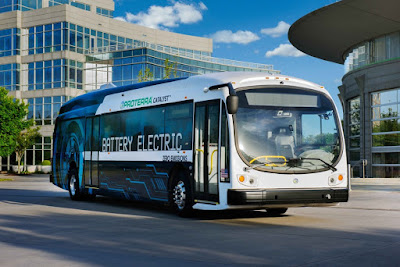Recently, a half-cent sales tax increase went into effect in Los Angeles County. The tax increase is estimated to generate $120 billion in revenue over the next 40 years, with much of this money earmarked for a substantial expansion of the county's rail network.
This tax is expected to pay for construction of nearly a dozen new rail lines stretching across the farthest reaches of the 510-square-mile county, connecting east to west and north to south, with the city of Los Angeles as the hub. The goal of this expansion, according to transportation planners, is to alleviate L.A.'s infamous traffic congestion, reduce fuel consumption and emissions, and convert 20-25% of the county's population into regular transit riders, an increase of more than three times the current rate.
Such planning, however, raises an important question: With the availability of autonomous vehicles said to be 4-5 years away, isn't a huge investment in mass transit a waste of taxpayers' money? After thoroughly examining industry trends and data, the answer is a resounding, "No." How can that be, you might ask? Well, it's because there's no one solution that works for everyone; people need transportation alternatives.
According to the United Nation's World Urbanization Prospects report, the global urban population exceeded the global rural population for the first time in 2007. Since that time, the global trend toward urbanization has continued, with approximately 56% of all people living in urban areas in 2016. By 2050, the UN estimates that 66% of all people will be living in urban areas.
This mass migration to urban areas means the number of cities with over 1 million inhabitants is forecast to grow to more than 662 in 2030 from 488 in 2015, with the number of large cities (populations of 5-10 million people) and mega cities (populations of more than 10 million people) forecast to grow from 71 to 104 during the same period.
Urbanization Growth Worldwide
 This migration to urban areas has been especially acute in the United States. According to the U.S. Census Bureau, the percentage of people currently living in U.S. urban areas is 81%, and this percentage is expected to rise to 87% by 2050.
This migration to urban areas has been especially acute in the United States. According to the U.S. Census Bureau, the percentage of people currently living in U.S. urban areas is 81%, and this percentage is expected to rise to 87% by 2050.
Urban Centers as Percentage of Population

Clearly, densely populated urban areas-many of which today already suffer from traffic gridlock and a shortage of parking spaces for privately owned vehicles-cannot readily accommodate more personal vehicles. Given the undeniable trend toward urbanization-especially in the United States-it's no surprise that many governments of large cities are planning for, and investing in, the expansion of their public transportation systems.
It's also no surprise that many of these larger U.S. cities rank among the worst nationwide in terms of commuter-time spent in traffic, as well as degree of difficulty in finding parking spaces. Cities like Los Angeles, Chicago, Houston, Boston, Seattle, San Francisco, Denver, Philadelphia, Phoenix and many more have no choice but to create transportation eco-systems-including light rail and dedicated bus lanes-capable of efficiently transporting their millions of inhabitants.
These systems work great for those who live, work and shop within walking distance of a transportation line. But what happens for those who don't? In the logistics industry, this conundrum is known as the "first mile, last mile" (FMLM) challenge. Mass transportation can carry people (or cargo) the majority of a long distance, but it's accounting for that first mile of the journey, or last mile of the journey, that poses the biggest obstacle to efficiently moving people or goods.
The city of Houston, for example, encompasses about 625 square miles, so it doesn't seem practical (or economically feasible) to build out a mass-transit infrastructure to serve the majority of the city's inhabitants. Even smaller cities like Denver, Seattle and Detroit have an area between 140-155 square miles, with many inhabitants living at the outer fringes of the city or beyond. How can people living on the outskirts of a city effectively get to their downtown office?
Well, what if an autonomous vehicle-personally-owned, or owned and operated by ride-hailing services like Uber or Lyft-dropped off commuters at the transit line in the morning, then picked them up at the transit line in the evening? And maybe having picked up a carry-out dinner and dry cleaning? That sure beats leaving a personal vehicle sitting at the train station or park'n'ride all day, doesn't it?
Suddenly the whole mass transportation and FMLM conundrum becomes more feasible, with each transportation solution playing to its strengths. Rather than compete with each other, traditional mass transportation services and emerging mobility solutions can complement each other to create the most efficient commuter system, while allowing people the flexibility to live where they want.
Obviously, creating such integrated systems is a substantial challenge, and it will be incumbent upon local, regional and state governments to honestly consider and communicate the overall true costs and benefits of such projects. And, by benefits, this does not mean the creation of additional jobs in the short term, but an improvement to overall quality of life in the long term, and delivered at a reasonable cost. Otherwise, taxpayers are going to be stuck with another bullet train to nowhere.
We all know that continued urbanization, autonomous mobility, and expanded mass transportation are coming. Now is the time to consider how these trends can be integrated to create the most efficient and economical system for all.
# # #
article from jdpower.com

No comments:
Post a Comment